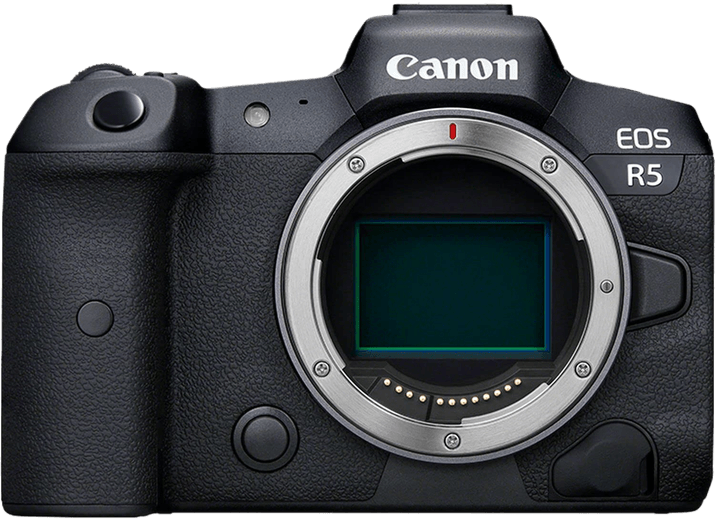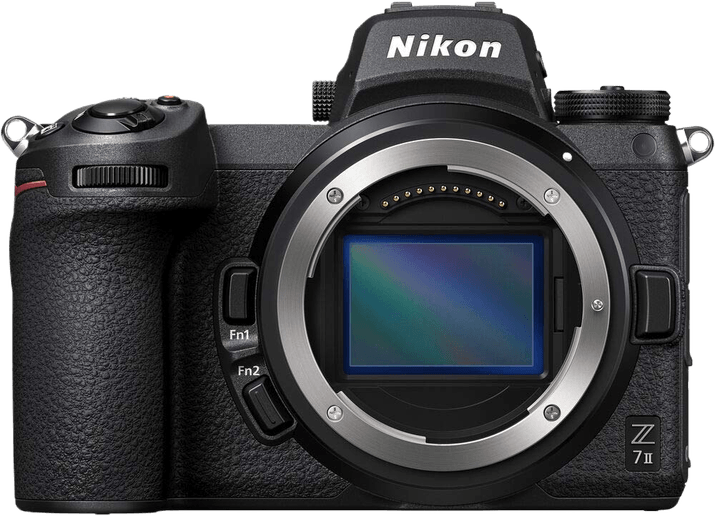Canon EOS R5 vs Nikon Z7 II Comparison
Canon EOS R5

Nikon Z7 II

The Canon EOS R5 edges out the Nikon Z7 II by just one point, scoring 86/100 compared to the Nikon’s 85/100. Both cameras are mirrorless and were released in 2020, with the Canon EOS R5 launching at a higher price of $4499, while the Nikon Z7 II debuted at $3399. They have similar dimensions, but the Canon EOS R5 is slightly lighter at 680g compared to the Nikon Z7 II’s 705g.
The Canon EOS R5’s higher score can be attributed to its better overall performance and features. On the other hand, the Nikon Z7 II still has its advantages, including a lower launch price, making it a more budget-friendly option for some photographers.
Both cameras are excellent choices for photographers looking for a high-quality mirrorless camera. The Canon EOS R5 may be a better option for those who prioritize performance and features, while the Nikon Z7 II may be more suitable for those seeking a more affordable option with a slightly smaller and heavier build.
Canon EOS R5 vs Nikon Z7 II Overview and Optics
The Canon EOS R5 takes the lead in optics with a score of 88/100, while the Nikon Z7 II scores 86/100. Both cameras share some common specifications, such as 45 and 45.75 megapixels, CMOS sensor type, full-frame sensor size, and image stabilization. Additionally, they have their respective lens mounts, with the Canon EOS R5 using the Canon RF mount and the Nikon Z7 II using the Nikon Z mount.
The Canon EOS R5 outperforms the Nikon Z7 II in shooting speed, boasting 20 frames per second compared to the Nikon’s 10. This difference allows the Canon EOS R5 to capture fast-moving subjects with greater ease and precision. Furthermore, the Canon EOS R5 has a superior processor, the Digic X, which contributes to its faster shooting speed and overall performance.
On the other hand, the Nikon Z7 II has a higher DXOMARK score for the sensor at 100, compared to the Canon EOS R5’s 95. This score indicates that the Nikon Z7 II’s sensor has better overall image quality, including color depth, dynamic range, and low-light performance. The Nikon Z7 II also has a slightly higher megapixel count at 45.75, providing marginally more detail in images.
Taking these factors into account, the Canon EOS R5 emerges as the better option for photographers who prioritize shooting speed and overall performance. The Nikon Z7 II, however, may appeal to those who value image quality and sensor performance above all else. Ultimately, the choice between these two cameras will depend on the specific needs and preferences of the photographer.
Canon EOS R5 vs Nikon Z7 II Video Performance
The Canon EOS R5 outperforms the Nikon Z7 II in video capabilities with a video score of 100/100, compared to the Nikon’s 91/100. Both cameras share some common specs, such as a maximum video frame rate of 120fps and built-in time-lapse functionality. However, the Canon EOS R5 takes the lead in terms of video performance due to its higher resolution and video dimensions.
The Canon EOS R5 boasts a maximum video resolution of 8K, with video dimensions reaching 8192 x 4320. This provides users with incredibly detailed and high-quality footage, allowing for more creative flexibility during post-production. The increased resolution also future-proofs the camera for emerging display technologies, ensuring that the footage captured remains relevant and visually stunning for years to come.
On the other hand, the Nikon Z7 II offers a maximum video resolution of 4K, with video dimensions of 3840 x 2160. While this is still a respectable resolution that produces high-quality video, it falls short when compared to the Canon EOS R5’s 8K capabilities. However, the Nikon Z7 II may be more suitable for users who do not require the extra resolution and would prefer a more affordable option or a camera with less demanding storage requirements.
Based on these points, the Canon EOS R5 stands out as the superior camera for video capabilities, offering higher resolution and video dimensions. The Nikon Z7 II, while not as advanced in this aspect, remains a strong contender for users who prioritize other aspects of camera performance or have different budget constraints.
Canon EOS R5 vs Nikon Z7 II Features and Benefits
The Canon EOS R5 and the Nikon Z7 II both have a feature score of 87/100, making them equal winners in this comparison. They share several specifications, which contribute to their identical scores. Both cameras have a 3.2-inch screen with a resolution of 2,100,000 dots, a touchscreen, a flip screen, WiFi, and Bluetooth. Neither camera has GPS.
The Canon EOS R5 excels with its advanced features, such as the ability to shoot 8K video and a more efficient autofocus system. Its higher-resolution electronic viewfinder provides a clearer image for photographers when composing shots. The R5 also has a more extensive lens selection, giving users greater flexibility when choosing lenses for various shooting situations.
On the other hand, the Nikon Z7 II has advantages such as a higher dynamic range, which allows for better detail in shadows and highlights, and a longer battery life. The Z7 II also has a more robust body construction, making it a more durable option for photographers who need a camera that can withstand harsh conditions.
Each camera has its strengths and weaknesses, and the choice between the two will depend on the specific needs and preferences of the photographer. The Canon EOS R5 is an excellent option for those who prioritize video capabilities, autofocus performance, and a wider lens selection. The Nikon Z7 II is better suited for photographers who need a more durable camera with a higher dynamic range and longer battery life. Both cameras offer a high level of performance and quality, making them suitable choices for professional and enthusiast photographers alike.
Canon EOS R5 vs Nikon Z7 II Storage and Battery
The Nikon Z7 II outperforms the Canon EOS R5 in storage and battery, scoring 71 out of 100 compared to the R5’s 68. Both cameras have two memory card slots and support USB charging. They also accommodate similar memory card types: SD, SDHC, SDXC (UHS-II compatible), and CFexpress for the R5, while the Z7 II accepts SD, CFexpress Type B, and XQD (UHS-II compatible).
The Nikon Z7 II excels with a longer battery life of 420 shots, using the EN-EL15c battery type. In contrast, the Canon EOS R5 manages 320 shots with its LP-E6NH battery. This advantage gives the Z7 II users more shooting time before requiring a recharge.
However, the Canon EOS R5 is not without its merits. It supports the faster CFexpress cards, which can provide improved performance in certain situations. Despite this advantage, the Nikon Z7 II’s longer battery life and overall higher score make it the superior choice for storage and battery capabilities.
Canon EOS R5 vs Nikon Z7 II Alternatives
Still not ready to make a decision? Check out our other popular camera comparisons for inspiration:
